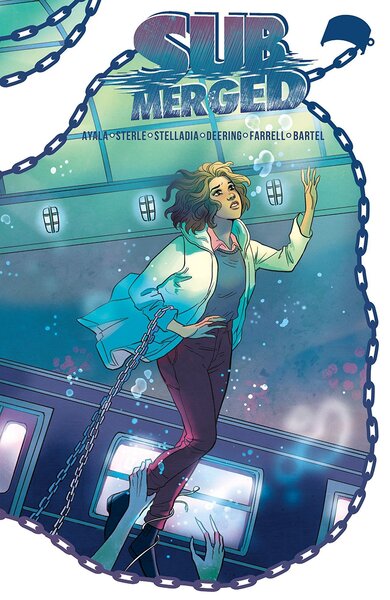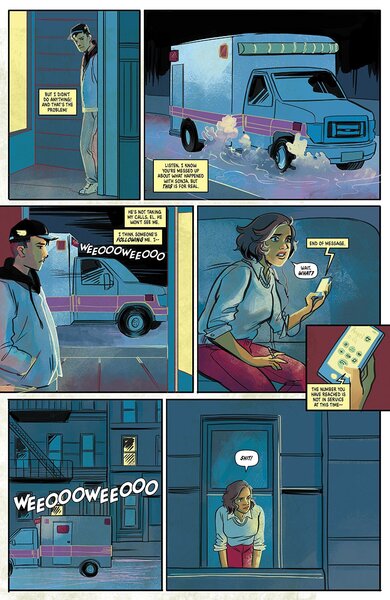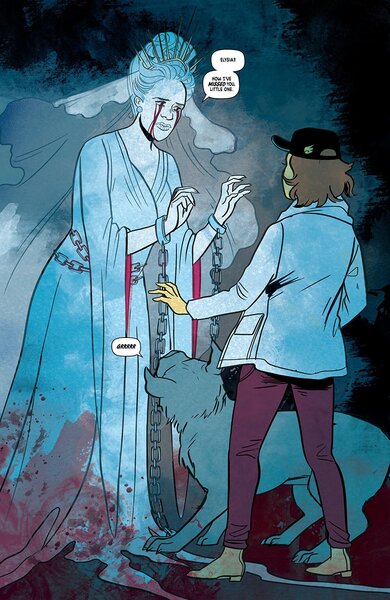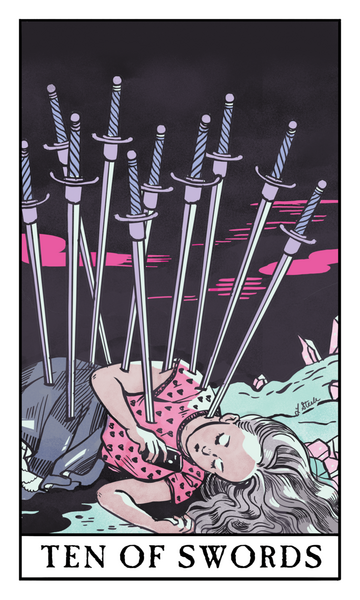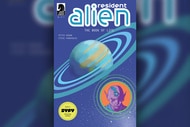Create a free profile to get unlimited access to exclusive videos, sweepstakes, and more!
Indie Comics Spotlight: How Tarot brought Vita Ayala and Lisa Sterle together on Submerged
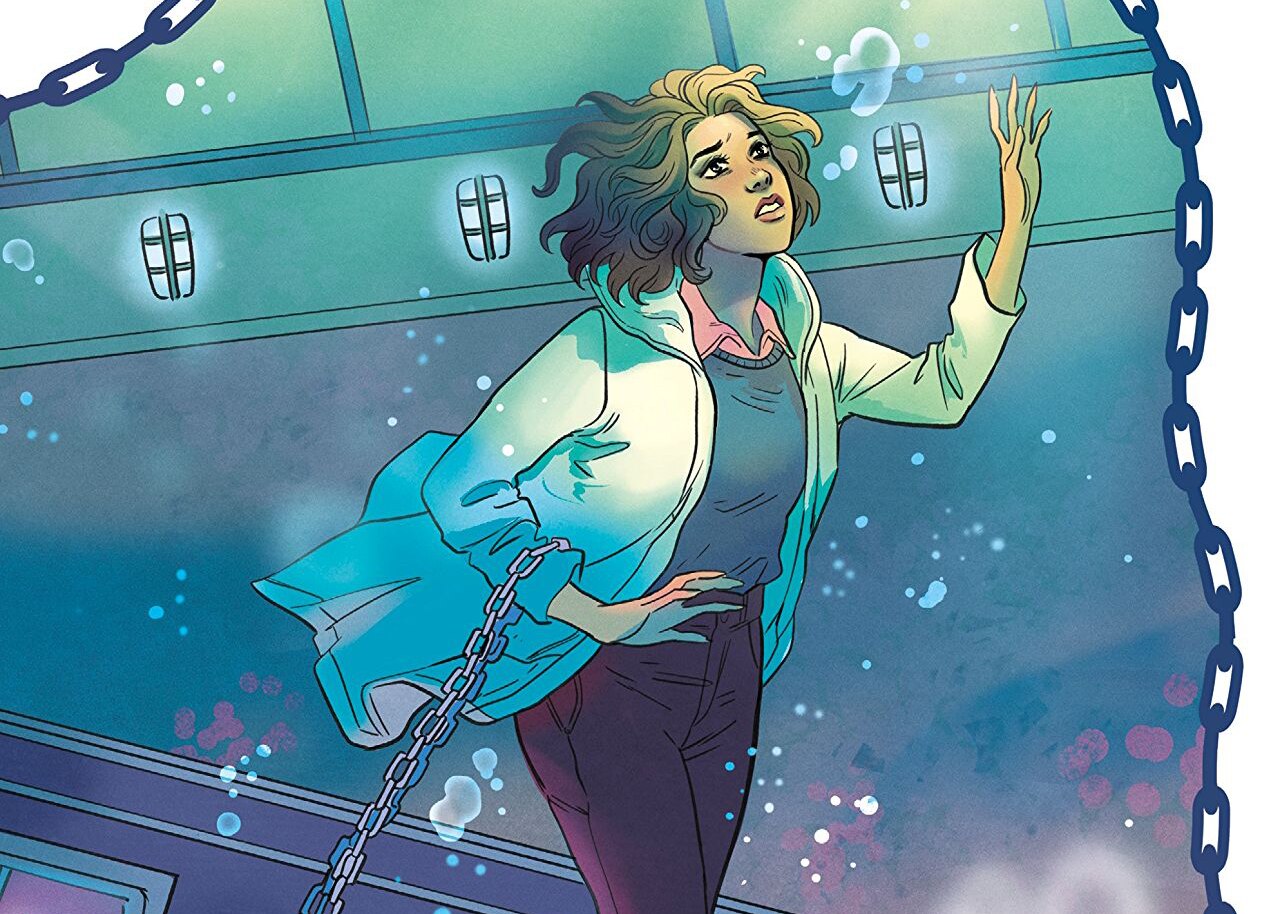
Submerged is a queer, brown, modern retelling of the Orpheus and Eurydice myth, in which the main characters are siblings instead of lovers and running around in the New York City subway system (which, if you’ve ever been stuck on a New York subway train off its route, is entirely possible). The comic dropped its first volume this week, written by current indie superstar Vita Ayala (The Wilds/Black Mask, Livewire/Valiant) and drawn by artist Lisa Sterle (Long Lost/Scout).
At first blush, the creative team seems like opposites: Ayala born and raised on the Lower East Side of New York City with a steady diet of comics, and Sterle coming up as a Sailor Moon fangirl in Dayton, Ohio. But it’s clear they have a synergy working together.
Submerged navigates the complicated world of Elysia Puente, a Latinx young woman who is in search of her brother Angel, who calls her in the middle of the night begging for her help... again. SYFY WIRE spoke to the creators about their work, the complicated story, and the Tarot Cards that brought them together.
How did the two of you get involved with Vault Comics?
Ayala: I met them at a convention. I got to talking with [co-founders] Adrian and Damian [Wassel] and we just vibed right away. We like a lot of the same stuff when it comes to horror, so I ended up sending them a very detailed pitch that had fallen through somewhere else. And they wanted to do it.
So then how did they find you, Lisa?
Sterle: I was actually never quite clear as to how exactly they found me, but I just had an email show up in my inbox one day with Vita's pitch in it. And the minute that I read it, I was like, "Oh yeah, this definitely has to be my next project."
Ayala: I saw your stuff on Twitter, actually. We were looking at artists on Twitter and they asked me if I like your work. And I saw the Tarot card [deck that you designed]. And I told them, “Please email this human being now. Because they're perfect.”
It was obviously magic. How did you come to draw an entire Tarot deck?
Sterle: I was actually having a really crappy day and for some reason, I was thinking of Tarot and the 10 of Swords. The original image is just this figure lying on the ground with 10 swords pierced all along their back and it's just total depressing destruction — they can't fight anymore. I could feel this card with the way that I just scroll through my Twitter feed and just feel absolutely defeated sometimes.
So I made that image and it just kinda took off in a way that I wasn't expecting. So I decided to do a full deck. The original Rider-Waite deck is the most iconic Tarot deck that most people know. I love the symbolism in it. I love the compositions but they don't really have a good modern interpretation and aren’t very diverse.
Ayala: It’s amazing. I love it.
It must be. It got you a job! What was it like when you first read the script for Submerged?
Sterle: The genre hooked me immediately. It didn't seem quite like horror, it was more like this dark fantasy/magical realism story. There were already character descriptions and creatures that, reading it, I could already imagine it. The setting was also super interesting because, I mean, with Long Lost, which I'd already been working on for like six months at that point, that story is set in the woods and I had to draw a lot of trees.
Ayala: You ended up drawing a lot of trains, though, for this one. So I'm very sorry.
Sterle: That's true! The Greek myth angle also kinda hooked me in. I used to read a lot of Greek mythology as a kid and I hadn't actually delved into that in a long time. I immediately connected with Elysia and Angel and with the world building and the aesthetic of it. And then also this deeper story of family and responsibility and guilt.
Elysia and Angel communicate mostly with their family in Spanish. Vita, you chose not to translate that into English for the readers. Why is that?
Ayala: That actually was something that Adrian and I went back and forth about. I was unsure whether or not we should, but he was willing to support me no matter what. I felt like I had been reading a lot of stuff with random, fake languages in it, like Paper Girls at the time. There are whole issues where I literally don't know what the hell they’re saying and they never translate it. Spanish is a real language that people could use Google translate [on] if they wanted. And Adrian agreed.
The Puentes definitely have some serious family issues and Elysia has a harrowing journey in this story.
Ayala: I mean it was important to me to touch on the fact that abusive situations affect more than one person.
You can only see things from your own perspective, but as readers, we get to see more of the context of what is going on. It was important to show humanity in Maria, her mother, as well as kind of her mistakes. When we do see the flashbacks, we get to see her and what she's gone through.
How did the two of you work out how to approach the art for this?
Sterle: I didn't have to do as much research as I might have because they did so much of that work. The scripts are pretty exacting. Honestly, Vita is a good director of comic book layout. There were definitely times that I wanted to get more experimental and I tried to do some new things here because layouts are one of those things that I'm maybe a little self-conscious of because I'm still kind of new to comics. You learn what works and what doesn't the more you do it.
Ayala: It's funny because I feel working with Lisa was really smooth because you're a psychic. I would have some thoughts [on how things should look] and then Lisa would share what she was thinking and draw something up and it was perfect.
The amount of work that you put into making [for example] the underworld feel totally the way I imagined it was incredible. I feel like I can't communicate that in words; it's either something that we connect on or not. We just developed our own language where we understood each other.
Vita, did you write the whole thing first and break it down into issues or did you write it issue by issue and send your scripts to Lisa?
Ayala: A little of both. I tend to work off of a very detailed outline and for this project, in particular, they were extra detailed just because the twists would be so tight that we'd have to really know where we were going earlier on.
So I did a page-by-page breakdown of each issue and that was done before anything else was done. Then I wrote it issue by issue, but because I was able to kind of communicate the overall structure with Lisa, I feel like that made it easier to understand each other.
How much of the real world parts of the story were pulled from your own lives?
Ayala: I feel like a very common thing with families, but brown families in particular, [is that they] have this tradition where the oldest sibling, especially if it's a girl, has the responsibility to kind of be the keeper of their younger siblings.
I have lots of like younger siblings. And whatever happened to them was going to happen to me. So I had better make sure that everything was okay.
Her family is not particularly thrilled with her coming out either.
Ayala: My family was cool with it. They were like, okay, that's fine. Live your bliss. But Elysia’s going through something that is very common... I've seen friends whose families felt differently than my family felt about it.
I kind of wanted to portray her as someone who doesn’t have the support but decided to be who they are anyway. And that was kind of important to me, even though my own family was very, very supportive.
What is the one thing you want people to take away from Submerged?
Ayala: That's a good question. I guess in writing it, one of the reasons I was drawn to using a more kind of classic Greek structure is because we think of those myths as legitimate in a way [we don't give] legitimacy to stories from brown people. I wanted to show that our experiences are as legitimate as anyone else's, and I wanted to trick people into aligning themselves with a woman who was probably very different than many of the readers. I guess empathy is the thing that I want people to take away from this.
Sterle: I feel like when you're in your mid-twenties, you go through this period where you kind of start seeing your parents and your family as more of who they actually are and the choices they've made that have informed who they've become, and this veil is lifted.
You see them as humans and they're no longer your heroes.
Sterle: Yeah. I think that's a really strong theme in this story and being able to have the strength [to] self examine and re-experience painful memories or past trauma and grow stronger from it. That element of the story speaks to me a lot. So I hope it speaks to other people, too.
Submerged Volume 1 is available everywhere January 30, 2018.
